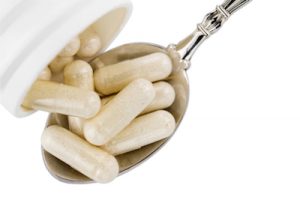A substance known as chondroitin might help slow the aging process in both men and women, by keeping the bones healthy. Therefore, Chondroitin could play a significant role in diseases such as arthritis.
Chondroitin Overview
The human body produces the chemical chondroitin and it can be found inside soft tissues like joint cartilage. However, the substance can also be created synthetically from the byproducts of animals like cows and sharks. Moreover, synthetic forms of the chemical can also be recreated in a laboratory. These variations of chondroitin are scientifically referred to as chondroitin sulfate.
Bodily Purpose
Chondroitin plays a significant role in helping tissue such as cartilage maintain its elasticity. This attribute enables individuals to stretch their muscles and bones. Without this ability, a person’s mobility could be greatly limited. Additionally, the substance allows cartilage to retain water more efficiently. Such action ensures that joints and surrounding structures like muscles and bones stay moist and lubricated and do not cramp or become more susceptible to injury caused by dehydration.
Aging and Its Impact on Cartilage
As individuals age, cartilage tends to weaken and, in some cases, gradually decreases. Such an occurrence can put individuals at a much more significant risk of developing serious physical injuries and illnesses like bone and muscle strains, sprains and tears, as well as ailments like arthritis. Any of these maladies can cause a great degree of pain and, in the most severe presentations, significant mobility issues.
 Chondroitin Supplementation
Chondroitin Supplementation
Fortunately, aging individuals stricken with cartilage weakening or loss, as well as younger individuals afflicted with arthritis or some other joint disease or damage, might benefit from chondroitin supplementation.
Effect on Damaged Cartilage
The substance has gained popularity particularly for its ability to curb the painful and potentially debilitating side effects of the joint disease known as osteoarthritis, sometimes simply referred to as OA. OA occurs when the cartilage surrounding an afflicted person’s bones gradually wears down. Typically, this occurs in the hands and knees. More severe manifestations of the ailment might present in the hips and spine.
Studies have concluded that chondroitin has been relatively effective in combating OA of the hand and knee when used daily and taken over a period typically lasting anywhere from three to six months. Chondroitin’s increased popularity as a therapeutic protocol can also be attributed to its lack of side effects. Unlike other commonly used treatment options like non-steroidal anti-inflammatory drugs (NSAIDs), which can cause a host of untoward issues, especially digestive concerns, chondroitin is believed to cause few, if any, problems. Because of this track record, chondroitin has been accepted as a therapeutic protocol for OA in Europe.
Chondroitin and Glucosamine
In the United States, however, osteoarthritis remedial preparations including chondroitin often also contain glucosamine. Like chondroitin, glucosamine occurs naturally as fluid that collects inside the joints. The role of this substance is to enhance the strength and vitality of joints and other soft tissues. Studies regarding the efficacy of the two substances working in tandem found that these preparations have aided those with moderate to severe knee discomfort.
Despite these findings, scientists stress that, while chondroitin is effective for certain individuals, research is still ongoing, and more conclusions must be drawn before the chemical becomes a surefire, go-to treatment for OA and other joint ailments.

 Chondroitin Supplementation
Chondroitin Supplementation



